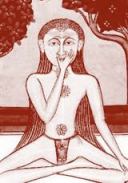Every once in a while, a student sends me something that is not only heartwarming, but serves as a reminder of why I do what I do. Here is a story of a modern day medic and an ancient Yogic technique. I hope you are just as touched by my student’s story, as I was.
My Sadhana (Daily Practice)
As a young man living in the 21st century my brain is constantly being rushed with all sorts of stimuli. It is quite difficult going about my day with out being affected by social media, subliminal messages, and other avenues of gaining my attention. Due to all of this my mind is essentially never present or clear. I am always thinking about what to do next and move ahead. However, about two weeks into this class, I was introduced to a breathing technique that quickly brought me back into the present.
This technique is called alternate nostril breathing. The first time I tried this in Professor Quesada’s class, I did not fully feel the effects. My brain was not used to being in the present moment, so I started to feel a little restless. At first, I had no faith in this technique because I did not see results immediately. Again, my brain was used to getting things done fast and seeing results quickly. Later that day I went home and looked up the benefits of this ancient breathing technique; everything that was listed was what I needed.
I have had a problem with anxiety for many years. I can now say that alternate nostril breathing has significantly helped me with that.

About a month or so ago when I started alternate nostril breathing, I started doing it for 15 minutes every morning to get me ready for the day. Those first few days were pretty challenging – it was difficult to stay focused because after sitting for 5 minutes my mind started wandering. Eventually my brain was able to stay focused for longer periods of time. I eventually figured out that this technique could be used any time I feel stressed or anxious. I currently practice alternate nostril breathing multiple times throughout the day in addition to the 15 minutes I do every morning.
I work as an Emergency Medical Technician for a private ambulance company where I deal with life and death constantly. There is a very high level of stress everyday and I take on a huge responsibility while the patient is under my care. Prior to learning this breathing technique, I would get butterflies every time I was dispatched and they would last the whole ride to the scene. The lights and sirens just made me more tense and even though the adrenaline rush was too much at times, I thought I had no choice but to force my body adapt to the stress and disregard it.
However after becoming comfortable with alternate nostril breathing I now use it when responding to calls. My performance and mental clarity has drastically changed.
For example, a few weeks ago my partner and I responded to a call for a traffic collision. When we arrived on scene I found an 11 year old child in the back seat trapped, with no pulse and no respiration. The patient had suffered a traumatic full arrest and it was the first time I had ever witnessed this. The family was crying and pressuring me. I felt a little dizzy, and just extremely overwhelmed. As my partner pulled out the patient and started compressions I ran over to the ambulance to pick up the defibrillator. On the way to the ambulance I forced my brain to focus on my breath and I quickly slowed down my respiratory rate which almost instantly calmed me down. My whole sprint to and from the ambulance was maybe 30 seconds but in those few moments I was able to stay calm and regain my focus just from focusing on my breath. The patient came back after 2 rounds of CPR and 3 shocks.
In school I have also used alternate nostril breathing before exams. By using this technique prior to exams I feel a sense of calmness and a major reduction in angst. It has also taken away tension throughout my body. Overall it has been useful to me in my work, school, and personal life. It has also made me more aware of living in the present. Thank you so much Professor Quesada for teaching me this breathing practice.








